If you’re looking for something unique for the holidays, you might consider adding a light-kit to your LEGO Winter Village or other LEGO sets. There are a number of LEGO-compatible light-kit vendors, and we talked about several of them in the past (see links at the end of this post). Today we will discuss the light-kits offered by BriksMax and Lightailing.

In general, two types of light-kits are offered by vendors who specifically focus on LEGO sets. Companies like Lightailing provide tiny pre-fixed LED dot-lights and strip-lights connected to a power source by very thin wires that you can easily hide between LEGO elements. These kits are customized for specific LEGO sets (or for specific elements like the LEGO streetlights) and are fairly straightforward to work with. The downside I found with these types of kits is that each component needs its own power source (battery box, USB, or adaptor), so they don’t work as well for large layouts.
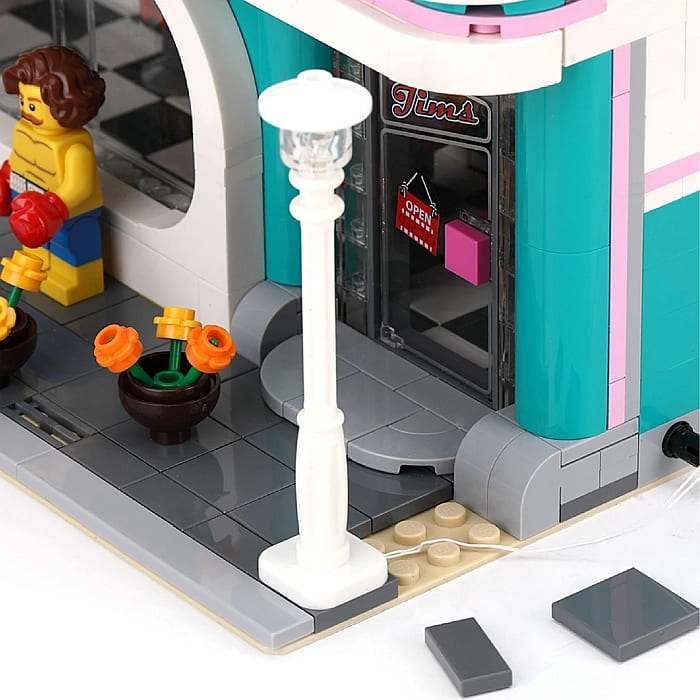
Companies like BriksMax offer more customization. Besides tiny LED dot-lights, strip-lights, and string-lights, they also offer connecting cables, expansion boards, and modules with various light effects. They do offer light-kits for specific sets, but you need to connect the components yourself. This means more work, but also more options for customization. The wires are braided thus a bit thicker, but still fairly easy to route between LEGO elements.
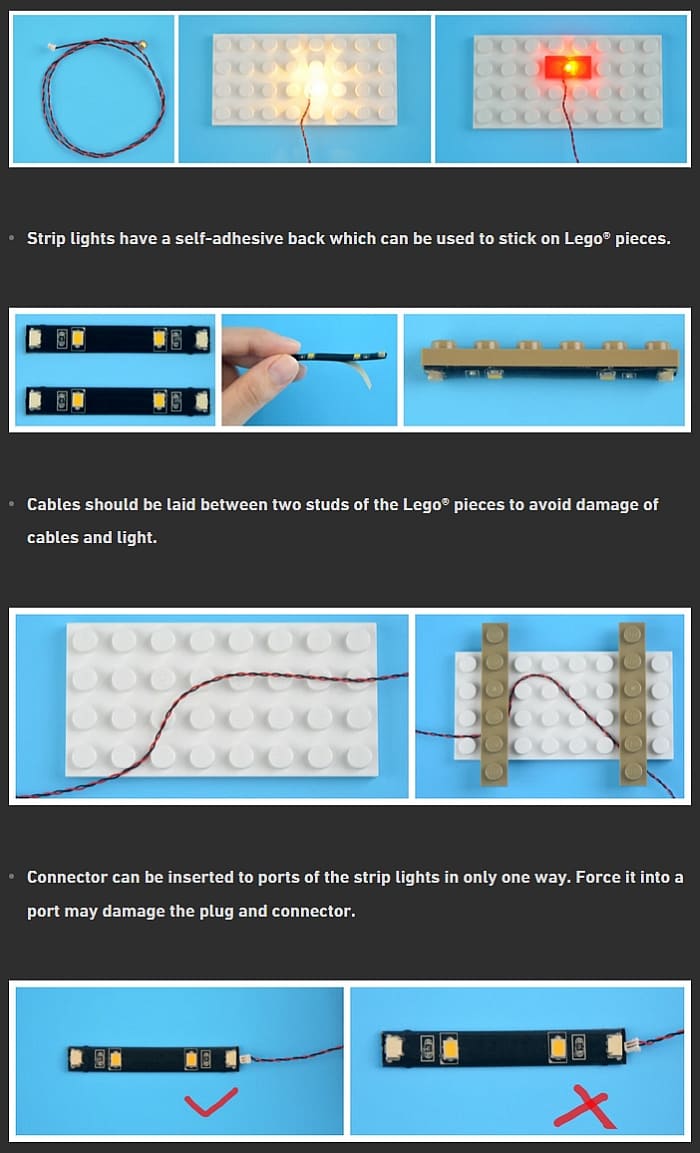
If this is your first time using light-kits, my suggestion would be to start with one of the easier setups for a specific LEGO set. I also recommend the easier kits for people who have issues with their vision or have difficulty manipulating very small pieces with their hands. Although the more advanced customizable kits are very cool, working with such tiny and fragile pieces is very tedious and not the most enjoyable experience.

Another issue with adding light-kits to your LEGO sets is that you will be hiding a lot of tiny wires. There are fewer wires with the more advanced sets as they can be custom routed the most efficient way, but still, all those wires will have to be hidden somewhere. This decreases the playability of the sets. Still, there is nothing as magical as a beautifully lit LEGO diorama, so if you have the patience and don’t mind sacrificing some playability, it’s worth the effort.
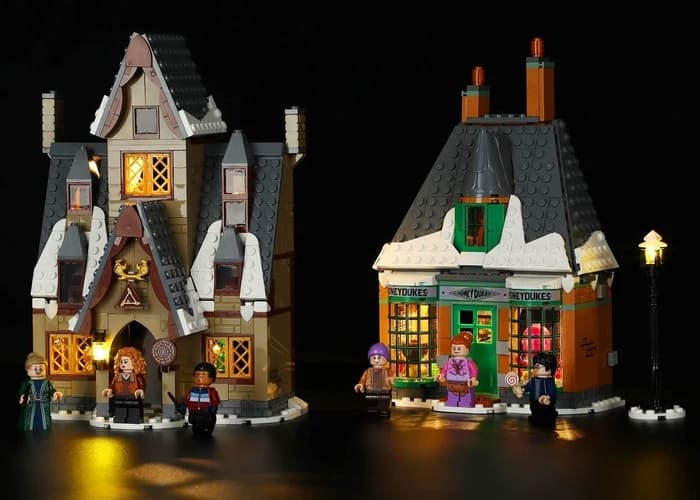
As far as lights for your LEGO Winter Village, both BriksMax and Lightailing offer light-kits for the various LEGO Winter Village sets. They have lights for the most recently released #10293 LEGO Winter Village Santa’s Visit, the #10275 LEGO Winter Village Elf Club House from last year, the #10267 LEGO Gingerbread House from a couple of years ago, and most of the other earlier sets, including the #10254 LEGO Winter Village Holiday Train!
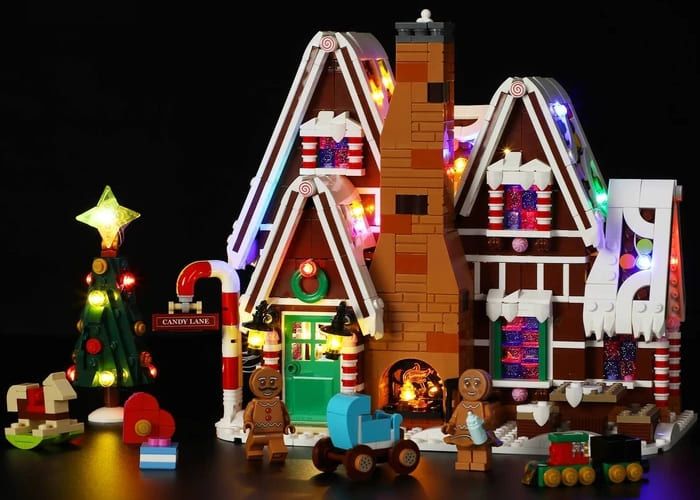
The light-kits are tastefully packed in a sturdy box and come with nicely printed step-by-step instructions. Below, you can see the content of the BriksMax light-kit for the #10267 LEGO Winter Village Gingerbread House.
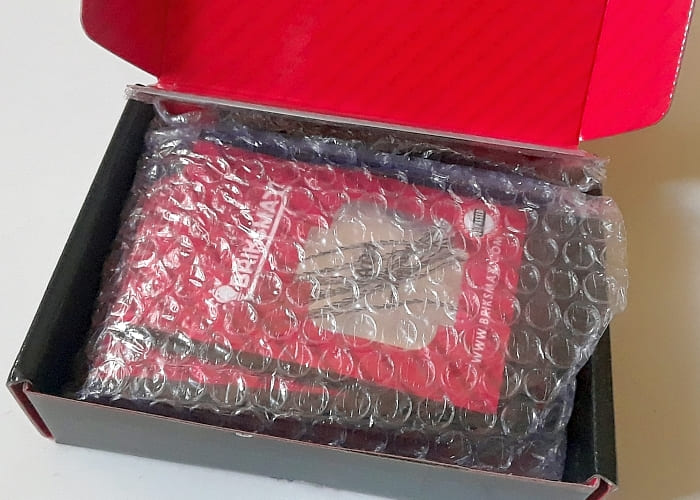

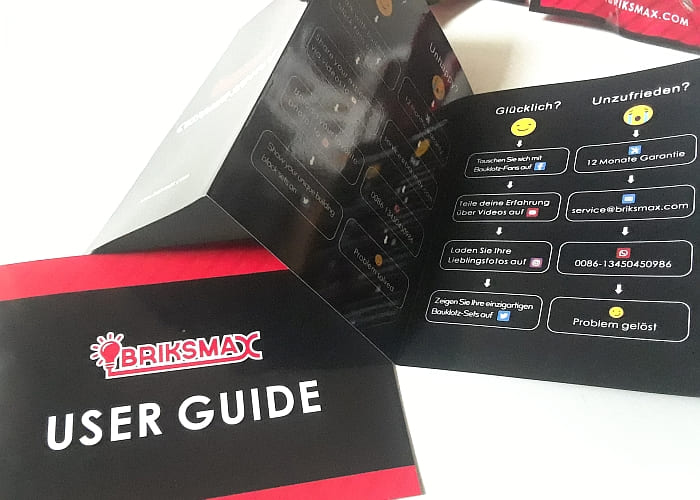
Although the pieces are tiny and delicate, I haven’t had any issues with defective or broken parts. You do need to be careful though, especially when you work with some of the connection points of the more advanced kits. Take your time, and work with them with patience. Having good light conditions is a must, and a pair of tweezers can be very helpful for connecting the components, and for routing the wires between LEGO pieces.
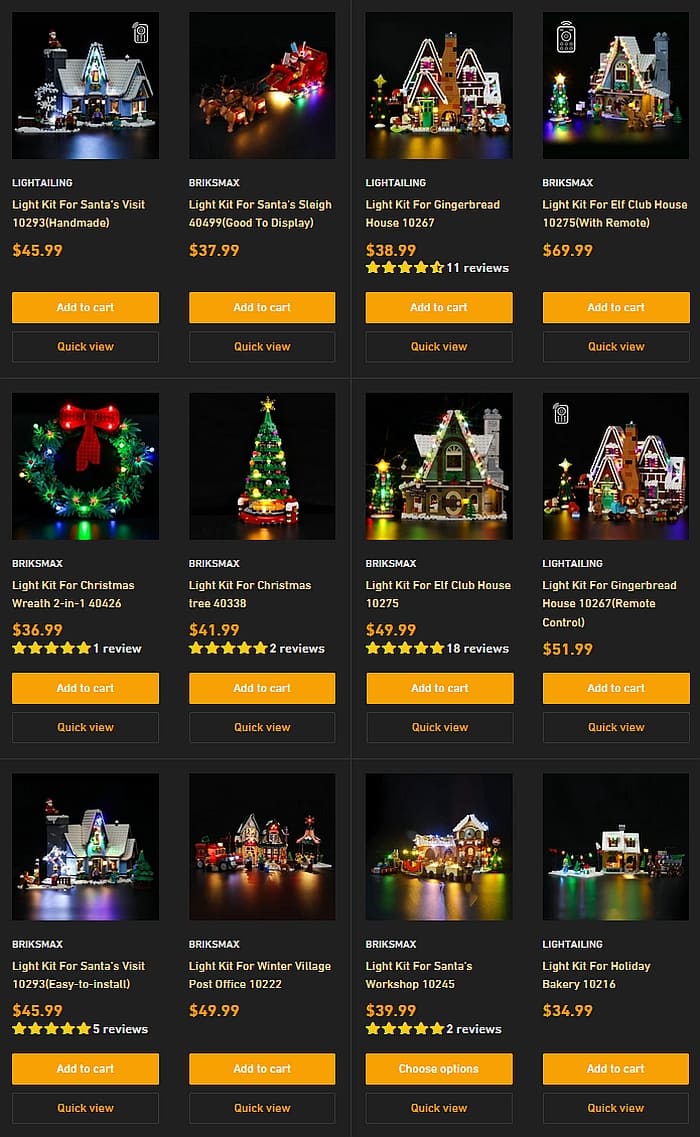
Overall, I recommend adding lights to your LEGO sets because the effect is stunning. Just be prepared that it will be tedious to install them and you will lose some of the playability of your LEGO sets. But if you stick with mostly display models that you don’t interact with that often, you will be pleased. To see the various light effects, visit the Lightailing YouTube page.
If you’re interested to check them out, both the Lightailing kits and the BriksMax kits are available at Lightailing.com (or BriksMax.com, which will redirect you to Lightailing.com). For the LEGO Winter Village set, they run about $40-$50 each. And you might also want to check out their other kits for many other LEGO sets from LEGO Harry Potter, LEGO Star Wars, the LEGO Modular Buildings, various LEGO vehicles, and more. Lightailing.com ships worldwide, and shipping is free for over $49. Hope you find a kit that works just right for your own LEGO displays.
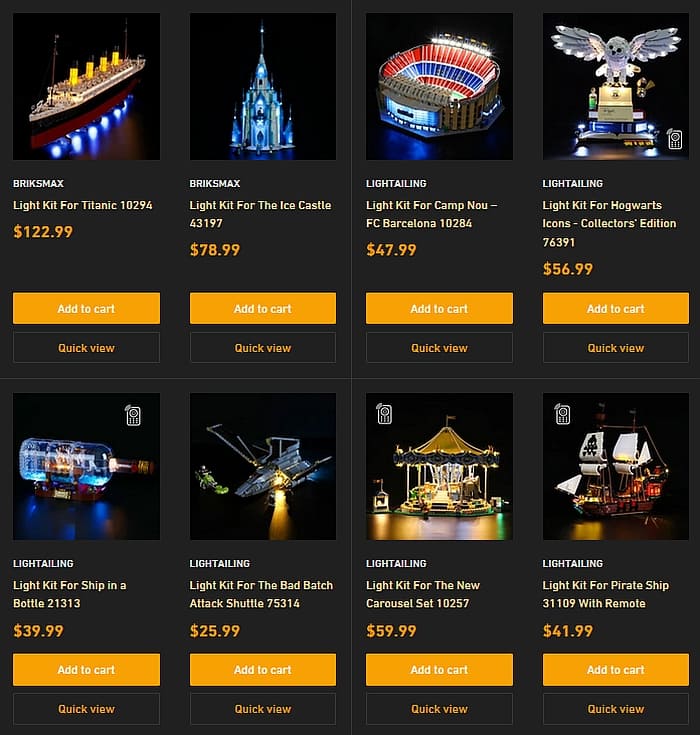
What do you think? Have you worked with any of the LEGO-compatible light-kits? What was your experience? Which LEGO set(s) did you light up? Feel free to share and discuss in the comment section below!
And you might also like to check out the following related posts:












Hmm, feels too complicated for my tastes.
Adding a lighting nose to Rudolph the Red-Nosed Reindeer would be pretty funny, though…
Bery tempting, but im still hesitant. I don’t want to deal with all those tiny wires. I have no patience for something like that. But the end result is beautiful.
My concern is that there are all these different brands, and I’m afraid to commit to any of them. What if they go out of business? What if they aren’t compatible? I will be sinking all this money into a light system that I won’t be able to expand down the line.
My understanding is that the BrickStuff and BrickLoot light-kits are considered the best amongst light kits, but the are more expensive.
Lightailing is a knockoff of BrickLoot, and Briksmax is a knock of of LightMyBricks, which is a knockoff of BrickStuff.
I know it’s confusing, but all these companies have been copying each other for some time now. The good thing about this is that they are compatible.
The ones I have tried all worked well, so at this point there doesn’t seem to be much of a difference, and there is likely someone who will continue making the same thing even if one company goes out of business.
I would focus on the effects that you want for your sets. For example, all of these companies make kits for Assembly Square, but they approach lighting slightly differently. So watch their demo videos and see which one you like the best.
I figured electricity would be a natural standard, as long as you knew what you were doing, but I might have a simple view of the subject. I know USA and Europe used different currents, but that might be another matter…
I remember visiting this site once, and I was confused that they had several different light kids for the same set. But I see now, they carry more than one brand.
I have added lights to a couple of sets now. The gingerbread house and the Friends stage. At first it was a little confusing but after doing the first one it was fun. And the reward of how pretty it is made it even better. I plan to do more of my Winter Village pieces over time. They are expensive. I would like to figure out how to do it without all the battery boxes. They are difficult to hide. Any suggestions would be appreciated.